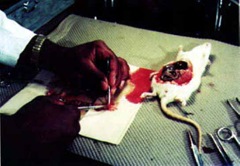Research Paper from CCRH
Immunological studies on Rheumatoid Arthritis treated with Homeopathic drugs: Results of the Pilot Study by Prakash Rao & Nagalakshmi Prasanna M
Clinical Research Unit (Homoeopathy) Puducherry
Senior Research Fellow, JIPMER, Puducherry
Introduction & Objective: Rheumatoid Arthritis (RA), a systemic disease, is characterized by a chronic inflammatory reaction in the synovium of joints. The inflammation is mediated by inflammatory cytokines. The objective of the study was to evaluate efficacy of homeopathic drugs and changes in the cytokine profile of rheumatoid arthritis patients treated with homeopathic drugs. Materials and Methods: A total of 35 rheumatoid arthritis patients and 10 healthy controls completed this pilot study. The patients were treated with Rhus tox. (8), Pulsatilla (8) and Medorrhinum (9) according to totality of symptoms. The control group (10) received placebo. The patients were evaluated for disease activity at the time of enrollment in the study and after 3 weeks of therapy. Serum cytokine levels (IL-1α, IL-1β, IL-2, IL-6 and TNF-α) were measured at baseline and after 3 weeks of treatment.
Result: Patients receiving Rhus tox. showed significant improvement in Patient Visual Analogue Score (VAS) for global assessment of disease after 3 weeks of therapy compared to placebo group(p = 0.03). Patients receiving Pulsatilla showed a significant improvement in tender joint count (p = 0.01) at the end of 3 weeks compared to baseline. They also showed significant decrease in ESR (p
= 0.02) as compared to placebo. However, hs-CRP values in treatment groups did not show significant difference when compared to the placebo group at baseline and after therapy. There was a significant decrease in IL 6 levels after 3 weeks of therapy in the patients treated with Rhus tox. and Medorrhinum
compared to placebo (p=0.05 and 0.04 respectively). Surprisingly, there was a significant increase in IL 6 level in the placebo group compared to their baseline values (p = 0.04), suggesting ineffectiveness of placebo and worsening of the disease process.
Conclusion: In the present open label placebo controlled pilot study patients treated with 3 weeks of homeopathic drugs showed improvement in clinical features, reduction in parameters of inflammation and IL6 levels. These observations suggest a possible immunomodulatory role of homeopathic drugs in Rheumatoid Arthritis which need to be confirmed by further studies.
Detailed Report with download link : https://www.box.com/s/iz4x1fk0fiohyhh2hj7i




